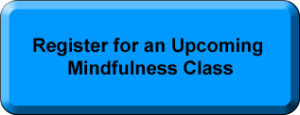
When we hold our inner critic with non-judgmental awareness, its voice starts to weaken.
Most people in our culture have extremely well-developed inner critics. The voice in our head that tells us we’re not good enough, talented enough, attractive enough, etc. In our competitive zero sum world, we don’t take failure, mistakes, or falling short on our life’s goals very well. Even when we do succeed or doing everything we can to do so, the inner critic can be incredibly harsh. The voice of the inner critic can be hard to resist. It can be very believable, seductive in the way it undermines us. The inner critic’s trash talking, when repeated over and over, can form narrative patterns that psychologists call cognitive distortions. Believing such cognitive distortions can cause great harm. If we believe our inner critic, we can become despairing, sad, depressed, angry, hopeless, anxious, and panicked, and these emotions can have a harmful effect on our bodies in the form of increased heart rates, higher blood pressure, and a weakened immune system. And our natural confidence and sense of purpose can be completely derailed. Sadly, many people never question the power of the inner critic or whether what it tells us is even true.
Mindfulness can be a real life-saver when it comes to the inner critic. If you practice mindfulness formally every day you will notice something that is universally true about every human mind no matter who you are or what your history or background: your thoughts don’t last. They are like soap bubbles, evanescent, appearing out of nowhere, sustaining for a time, and disappearing into nowhere. People who don’t pay attention to their thoughts tend to believe that their thoughts are facts, irrefutable, always true and actionable. People who do pay attention to their thoughts over weeks, months, and years of mindfulness practice, come to realize that thoughts are passing events in consciousness, not facts. When we realize the impermanent nature of thoughts, it is much harder for us to believe the negative narratives spun by our inner critic. Mindfulness helps us develop awareness of our thought processes. Without that awareness we are at the mercy of our thoughts. With that awareness we have a choice about how to respond to the inner critic. Here are three ways of working with the inner critic:
1) The next time you notice that you’re feeling bad about yourself, ask yourself, What thought or story am I believing now? Just asking this question can weaken the power of the inner critic to enthrall you with its negativity, interrupting what Tara Brach calls the “trance of unworthiness.” The key thing here is to get into the habit of noticing your thoughts as objects of experience, like the sounds of traffic or sensations in your body. And also to notice what direction they are taking. The best way of establishing this habit of noticing our thoughts is simply to practice mindfulness every day for at least 10 minutes. Regular mindfulness practice puts us in a more objective relationship to all our thoughts, including the inner critic’s, which gives us more choice about what to believe.
2) Don’t be the critic of your inner critic. That will just put you in a contentious relationship to your own mind, which will cause more shame and stress. Instead, recognize the inner critic as your mind’s misguided attempt to take care of you. Hold your inner critic as a part of yourself that is wounded and in need of healing. When we can hold our inner critic with non-judgmental awareness, its voice starts to weaken.
3) Practice lovingkindess meditation for yourself. Repeating a series of phrases of well-wishing for yourself can help us connect to our basic desire for happiness and our essential worthiness as human beings. The phrases are best when they are simple, such as, May I be safe, may I be healthy, may I be happy, may I be filled with ease, etc. When our hearts are open towards ourselves, our desire for happiness becomes obvious, understandable, and basic to who we are. Repeating the phrases of lovingkindness acts as a direct antidote to the inner critic’s harsh judgments.
Practicing these techniques will over time diminish the inner critic’s hold on us. The inner critic may still tell its dark tales of our unworthiness, but we’ll believe those tales less and less. It’s as if the thoughts are still there, but their volume is much lower. And in time, the inner critic can become so weakened that its thoughts disappear too.



